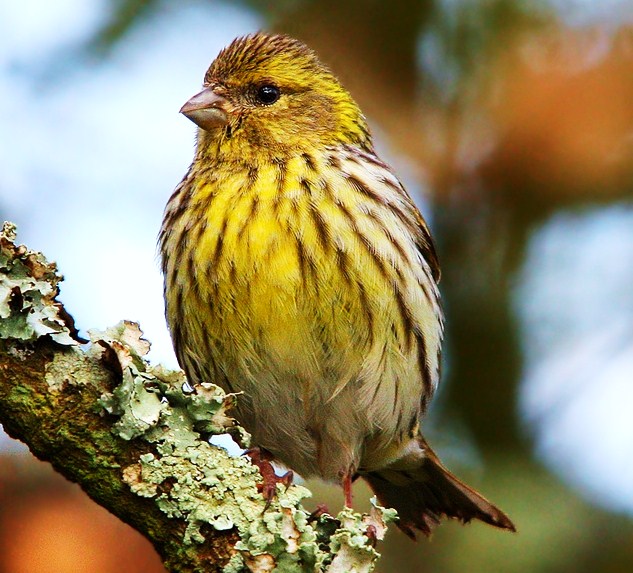Serinus serinus
 |
| Photo by Rosa Gambóias (Flickr) |
Common name:
Taxonomy:
Order Passeriformes
Family Fringillidae
Range:
The European serin breeds across continental Europe and all around the Mediterranean basin, from the Iberian peninsula and Morocco all the way to Israel. They are mostly absent from Scandinavia and the British Isles. The populations in central and northern Europe are migratory, wintering in southern Europe and northern Africa.
Size:
These birds are 11-12 cm long and have a wingspan of 20-22 cm. They weigh 11-13 g.
Habitat:
They are found in open woodlands, plantations and forests, generally preferring broadleaf forests, but also occurring in coniferous forests. They are also found in gardens, parks and sometimes in scrubland areas.
Diet:
They mostly feed on the seeds and buds of a wide variety of plants, including wild herbs, flowers, bushes and trees. During the summer they also eat insects, namely aphids.
Breeding:
European serins breed in March-May. The female buids the small cup-shaped nest using fine twigs, small roots , skinny stems , leaf veins , flower spikes of grasses, flowering heads of herbs, green moss and plant fibres. The nest is well hidden in a dense bush or tree. There the female lays 3-5 greenish or bluish eggs with red-brown spots, which she incubates alone for 11-13 days while receiving food from the male. The chicks fledge 13-18 days after hatching. Each pair typically raises 2 broods per year.
Conservation:
IUCN status – LC (Least Concern)
This species has a very large breeding range and a global population of 30-80 million individuals. in some countries the populations have undergone a moderate decline in the last few decades, but overall this species is not threatened.







